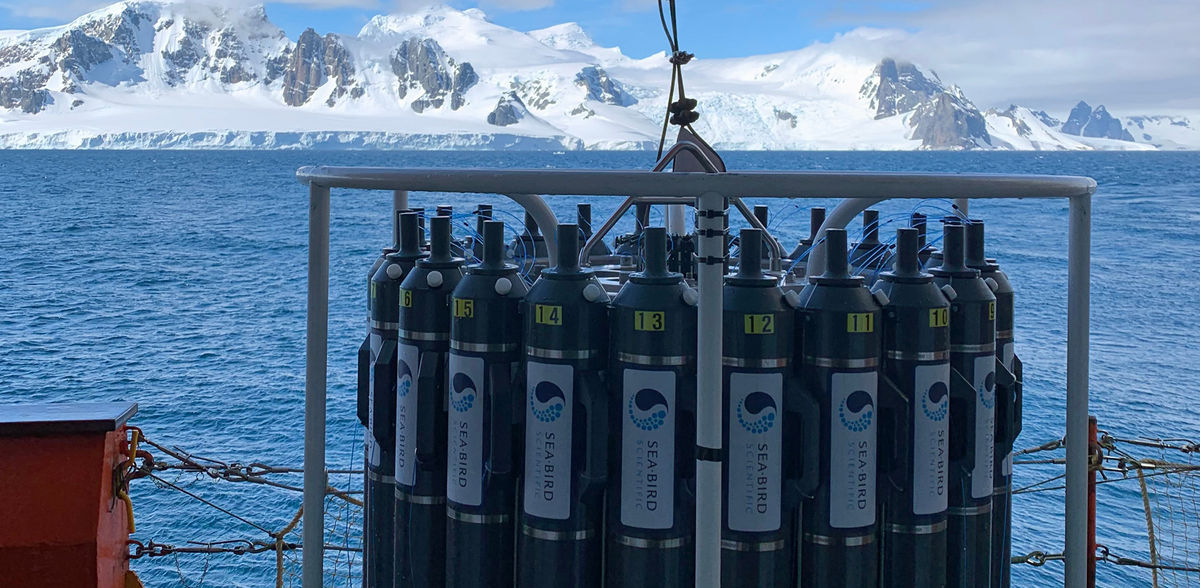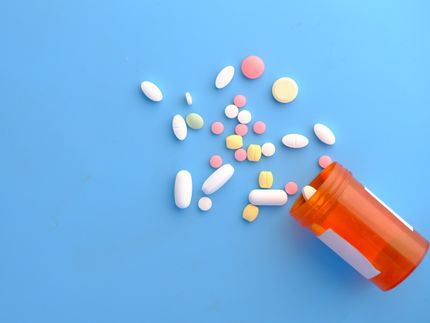Marine fungi could degrade plasticizers
“It's simply amazing”
Advertisement
It has been known only for a few years that marine fungi float freely throughout the oceans. So far, researchers know next to nothing about how these fungi interact with plastic. Oceanographer Federico Baltar assumes that certain marine microbes can metabolize plasticizers contained in plastic. Initial findings bolster his hypothesis.
One drop (one milliliter) of ocean water contains millions of microbes. “Microbes are an extremely diverse group, including bacteria, fungi, algae or a multitude of other living organisms,” explains Spanish-born oceanographer Federico Baltar from the Department of Functional and Evolutionary Ecology at the University of Vienna.
In a nutshell: microbes are diverse - and they are innumerable. 89 percent of marine life is microbial. Although measuring less than a hundred micrometers, which means they are visible only under a microscope, microbes keep the oceans in running order. Federico Baltar is conducting research on the role played by these tiny organisms in the sea –marine fungi are an area of special interest to him.
So small, so many, so important
Microbes play important roles in many elementary cycles – including those of carbon, phosphorus or sulphur. The DNA of organisms contains genes that are responsible for the formation of enzymes which in turn control metabolic processes. Certain marine microbes have genes that enable them to produce enzymes that convert organic material, such as plankton, into inorganic nutrients such as nitrates and phosphates, which in turn are needed by other organisms.
Depending on the respective biotic community and conditions, the metabolic process can also produce the greenhouse gas nitrogen dioxide (N2O). Other marine microbes can fix carbon dioxide (CO₂). “These microbes play a crucial role in the context of storing carbon from the atmosphere in the depths of the ocean,” explains principal investigator Baltar. Many of his investigations demonstrate that these microbes are of paramount importance. After all, marine microbes produce half of the oxygen available on Earth. “You could say that every second human breath is made possible by microbes in the oceans,” says Baltar.
The big research gap
Baltar is currently investigating how microbes interact with so-called plasticizers – specifically phthalates and organophosphate esters (OPEs). Making plastic more flexible, these substances are added to many products, from packaging to PVC flooring. Plasticizers enter the oceans together with plastic via rivers or are transported through the atmosphere over long distances and accumulate in the sea. Organic chemists have been able to detect them on a large scale.
Preliminary studies have shown that some microbes can metabolize certain plasticizers and use them as a source of energy or food. Phthalates, which are poisonous to other microbes, are particularly prone to being digested. So far, little is known about which microbes interact with which plasticizers under various conditions. Federico Baltar and his team intend to close this major research gap to some extent. The Austrian Science Fund FWF has awarded roughly EUR 400,000 to Baltar’s project “Biogeochemical disruption of the ocean by plasticizers“.
From the Antarctic to the lab
Baltar’s research began in the vastness of the oceans. On each of three research campaigns, Federico Baltar and his team spent a month crossing the Atlantic from Spain to Patagonia and navigating the waters off Antarctica and Greenland, his team constantly collecting fresh samples of marine microbes.
“We used these living samples to measure which mechanisms the microbes use to break down the complex organic molecules. We studied the genome of the individual cultures to understand their metabolic potential for breaking down these compounds. And then we looked at which genes they express to find out which metabolic pathway they use,” explains Baltar.
The samples were then used to produce cultures. In Baltar's laboratory at the University of Vienna, the researchers analyze the microbes' DNA and RNA and sequence them.
“It's simply amazing”
The researchers are focusing particularly on fungi that float in the water column of the oceans, since these microbes have barely been researched. It has been proven for only a few years that they do occur in the open ocean. They also focus on these specimens because Baltar’s research group was able to amass a large collection of them during the research cruises.
The researchers exposed around 300 different fungi to different quantities of different plasticizers. Currently they have found 15 that were able to break down certain plasticizers. “It was a hypothesis of mine that there could also be fungi in the open ocean that break down plastic or plasticizers. Finding out that it was true didn't just surprise me, it made me happy. It's simply amazing,” says Baltar. As the research process is not complete, he cautions that one cannot make definitive statements yet, but the researchers are on the right track.
At the moment, the members of his research group are sequencing the genomes of 15 species of fungi, since Federico Baltar and his team want to find out which enzymes are used and which metabolic pathway they use. “Once we know the genome, gene expression and enzymatic activity, we can find out whether the different fungal species use the same metabolic pathway,” explains Baltar.
Like hacking out a wilderness trail with a machete
The researchers are also testing what influence the temperature and salinity of the water have on the metabolic pathways of marine fungi. This is an important question for our future, since, as a result of the climate crisis, the water in the oceans is heating up and ice masses are melting. This raises the salinity in many regions and lowers it in others.
In order to find answers to their research questions, Federico Baltar and his team still have a great number of experiments ahead of them. Just how many will be decided during the research process. “There are lots of unknown aspects. We can only align with the cultures and conditions that we simulate and keep testing. It's like setting out into a complete wilderness with a machete.”
At the end of the process, the researchers will return to the field samples. “We will look at how common the fungi are in the ocean. We want to know whether they use the genes also in the open ocean” explains Baltar.
In future, he and his team want to investigate how microbes interact with the plasticizer bisphenol. The first scientific papers on this topic are due to be published by the end of 2024. Federico Baltar's research thus lays the foundation for understanding how microbes such as marine fungi interact with plasticizers in the open ocean – knowledge that researchers from other disciplines can also build on.
Original publication
Baltar F., Martínez-Pérez C., Amano C. et al.: A ubiquitous gammaproteobacterial clade dominates expression of sulfur oxidation genes across the mesopelagic ocean, in: Nature Microbiology 2023
Breyer E., Baltar F.: The largely neglected ecological role of oceanic pelagic fungi, in: Trends in Ecology & Evolution 2023
Breyer E., Zhao Z., Herndl GJ., Baltar F.: Global contribution of pelagic fungi to protein degradation in the ocean, in: Microbiome 2022




































































